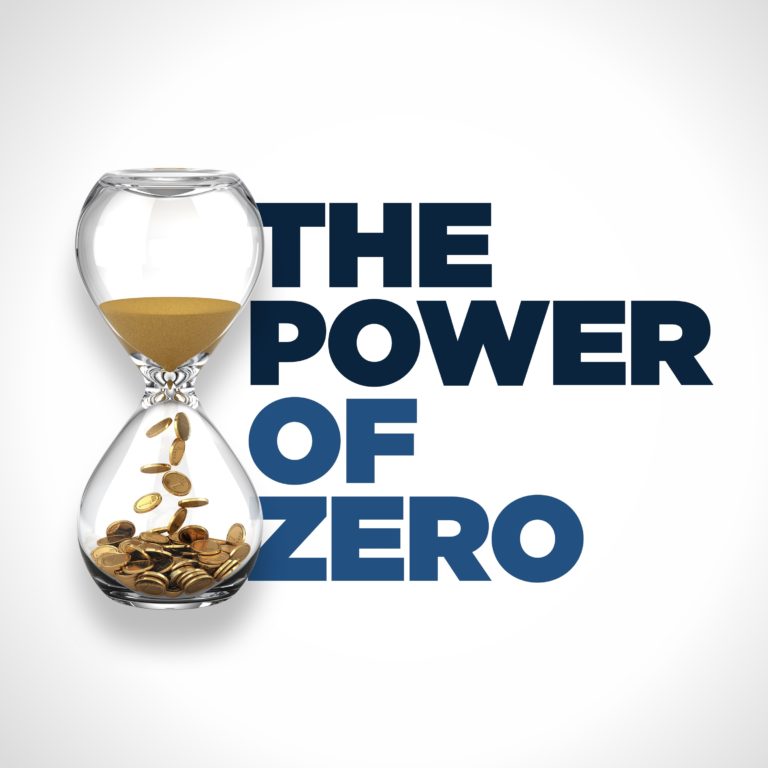Don’t Make the Common Mistake of Keeping Too Much of Your Money Here
Getting to the 0% tax bracket is a dream scenario – and one that I help my clients accomplish – but it doesn’t happen by accident. Enjoying a tax-free retirement takes proactive and strategic planning. And, it must begin today.
The longer you wait, the longer you’re standing on the proverbial train tracks, with a high-speed taxation disaster racing toward you, and the less time you have to haul yourself to safety. We’re enjoying historically low-income tax rates at the moment, but we have to face reality: Taxes are not likely to stay at historical lows forever.
So, what should you do? Critical to your journey toward the 0% tax bracket is an understanding of the three basic types of investment accounts. I often refer to these three accounts as “buckets” of money.
Bucket Basics
The three buckets you need to understand are taxable, tax-deferred, and tax-free. Contributing dollars to these accounts in a willy-nilly or haphazard way during your accumulation years can have enormous unintended consequences during your retirement years and can even prevent you from ever being in the 0% tax bracket. The goal during your working years should be to allocate the right amount of dollars to each bucket so that, during retirement, all your streams of income are tax-free. Defining the pros and cons of each bucket can help you understand the correct amounts to allocate to each one. Today, we’re going to focus on the taxable bucket.
What’s in Your Taxable Bucket?
A taxable investment is one that requires you to pay taxes on the account’s growth each and every year. Included in this bucket are common, everyday investments like money markets, CDs, stocks, bonds, and mutual funds. You likely own several of these.
How can you tell if your investment is taxable? The tip-off is the 1099 you receive from the financial institution at the end of every year. Simply put, it’s a tax bill. It tells the IRS how much taxable income you earned from a given investment.
Here’s an example: If you have $100,000 in a CD and it grows 2%, you have a taxable event. You will have $102,000 in your account at the end of the year, but you will have to pay federal and state tax on every last bit of that 2% growth. So, $2,000 gets thrown right on top of all your other income and is taxed at your highest marginal tax rate.
Assuming marginal tax rates of 30% (24% federal, 6% state), you would owe the IRS $600. So, you didn’t really experience $2,000 of growth, you only experienced $1,400. Thus, your after-tax rate of return on that $100,000 is only 1.4%. This annual taxation is one of the perils of the taxable bucket.
Your Taxable Bucket: The Ideal Balance
Now, you might be thinking, “If these investments are 100% taxable, why have them at all?” The answer is liquidity. Generally speaking, it’s easy to get your hands on these investments, which means that they make for great emergency funds. Financial experts generally agree that we should have roughly six months’ worth of income in these accounts as a buffer against life’s unexpected emergencies. Having too little means that we can be forced to withdraw money from illiquid investments, incurring unwanted taxes or penalties. Having too much, on the other hand, means that we can be disproportionately affected by the rise of taxes over time. From a tax-efficiency perspective, therefore, investments in this bucket should be just the right amount: about six months’ worth of income.
For example, let’s say that you need $4,000 per month to keep your family afloat. To determine the ideal balance in your taxable bucket, simply take this amount and multiply it by six months. So, the most you would want to maintain in this bucket at any given time is about $24,000.

The Double Compounding Effect
There’s another reason to limit investment in your taxable bucket, too. In his groundbreaking book, The Power of Zero, David McKnight calls it the “double compounding effect.” Here’s how it works:
As your balance in the taxable bucket grows, your 1099 (or tax bill) grows, as well. To make matters worse, as tax rates rise, the amount of taxes you owe on that ever-increasing 1099 likewise increases. So, in a rising tax-rate environment, you can see how your tax bill can increase at alarming rates.
Consider this example: Let’s say that you make a contribution of $100,000 to a taxable investment that earns 5% per year. Because this investment is taxable, you would pay tax at your marginal rate, both state and federal. In this example, we’ll use 24% federal and 6% state for a total of 30%. By the end of the first year, your pre-tax investment return is $5,000.
But, when we figure in taxes at the 30% rate, your true after-tax return is only $3,500. If we continue down this road for 10 years, raising taxes by 1% with each passing year, you can see the true impact of this double compounding effect after a decade: a 74% increase in your tax bill!
Accounting for Social Security Taxation
To further complicate matters, when you don’t limit your investment in the taxable bucket, it can have unintended consequences for your Social Security benefits. In 1983, President Ronald Reagan and House Speaker Tip O’Neill helped pass a law that would tax Social Security benefits in order to ensure the long-term viability of the program.
Under this legislation, the IRS created income limits, or “thresholds,” that determine whether or not your Social Security benefits will be taxed. The types of income that contribute to these thresholds are collectively referred to as provisional income. Any growth which you experience in your taxable bucket counts toward these thresholds and could potentially cause your Social Security benefits to be taxed.
Is Your Taxable Bucket Hindering Your Retirement Security?
Some people are tempted to put nearly unlimited amounts of money into the taxable bucket. They do so because it’s liquid, it tends to be safe, and it gives them peace of mind in the event of an emergency. I hope you can see, though, that all these perceived benefits come at a high cost.
At the end of the day, the primary purpose of your taxable bucket is to provide a cushion against life’s emergencies. That’s it, nothing more. By surrendering to the impulse of having more than six months’ worth of expenses in this bucket, you hinder the growth of your investments and create a laundry list of unintended consequences for your finances now and in the future.
By having too much money in this bucket, you make it nearly impossible to be in the 0% tax bracket in retirement.
Are you interested in learning more? If you want to sit down with me and develop a strategy so you can pay less in taxes in retirement, schedule a strategy session with me. You can also request a complimentary copy of David McKnight’s bestselling book, The Power of Zero. I look forward to hearing from you!



